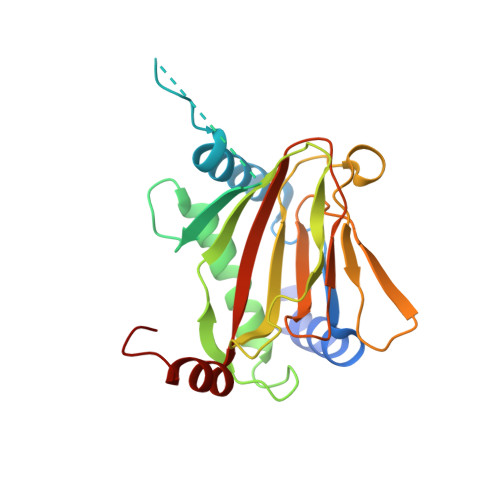Structural Basis of Prolyl Hydroxylase Domain Inhibition by Molidustat.
Figg Jr., W.D., McDonough, M.A., Chowdhury, R., Nakashima, Y., Zhang, Z., Holt-Martyn, J.P., Krajnc, A., Schofield, C.J.(2021) ChemMedChem 16: 2082-2088
- PubMed: 33792169
- DOI: https://doi.org/10.1002/cmdc.202100133
- Primary Citation of Related Structures:
6ZBN, 6ZBO - PubMed Abstract:
Human prolyl-hydroxylases (PHDs) are hypoxia-sensing 2-oxoglutarate (2OG) oxygenases, catalysis by which suppresses the transcription of hypoxia-inducible factor target genes. PHD inhibition enables the treatment of anaemia/ischaemia-related disease. The PHD inhibitor Molidustat is approved for the treatment of renal anaemia; it differs from other approved/late-stage PHD inhibitors in lacking a glycinamide side chain. The first reported crystal structures of Molidustat and IOX4 (a brain-penetrating derivative) complexed with PHD2 reveal how their contiguous triazole, pyrazolone and pyrimidine/pyridine rings bind at the active site. The inhibitors bind to the active-site metal in a bidentate manner through their pyrazolone and pyrimidine nitrogens, with the triazole π-π-stacking with Tyr303 in the 2OG binding pocket. Comparison of the new structures with other PHD inhibitor complexes reveals differences in the conformations of Tyr303, Tyr310, and a mobile loop linking β2-β3, which are involved in dynamic substrate binding/product release.
Organizational Affiliation:
Department of Chemistry, University of Oxford, 12 Mansfield Road, Oxford, OX1 3TA, UK.

















